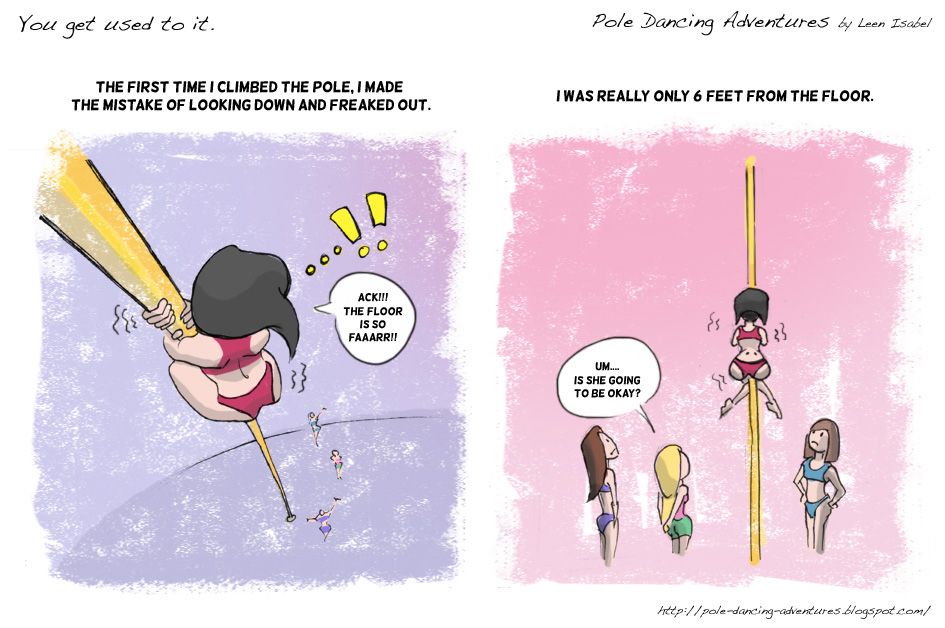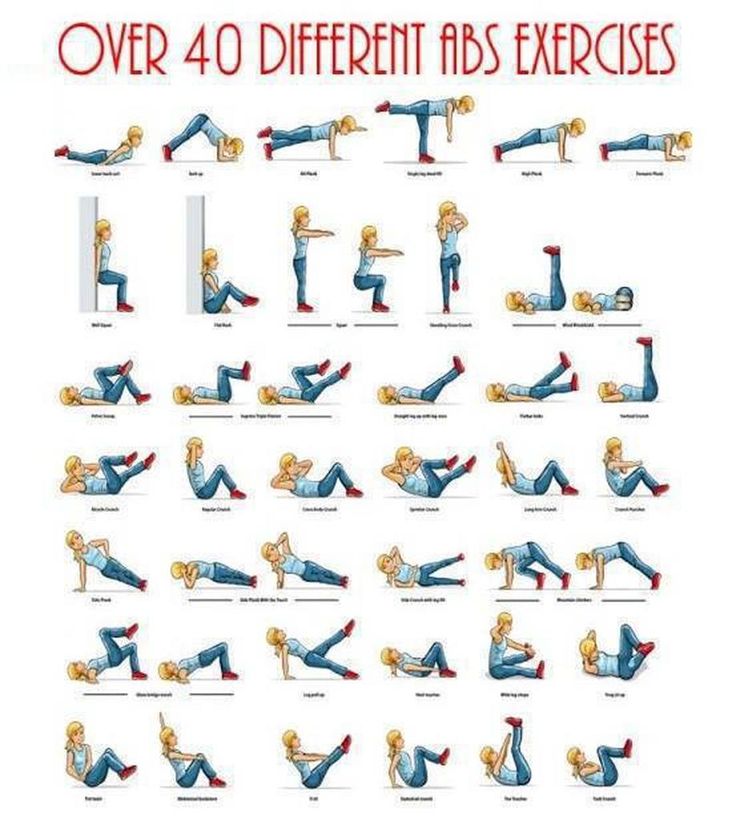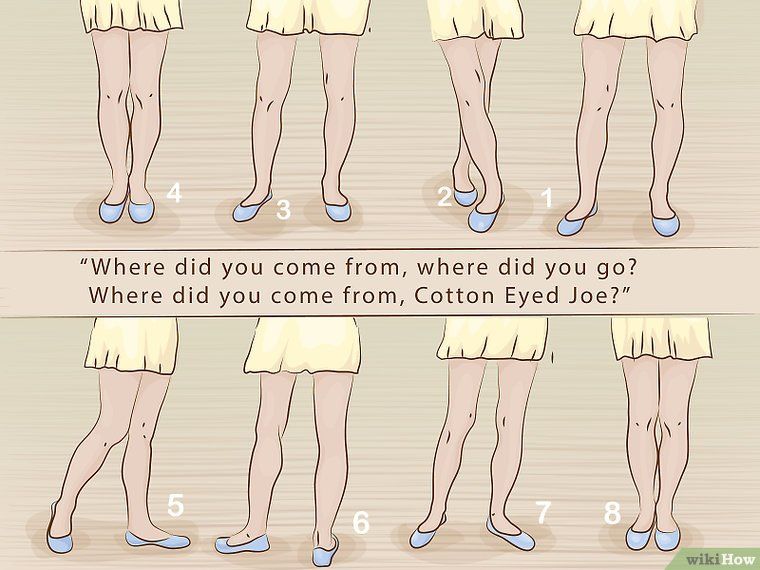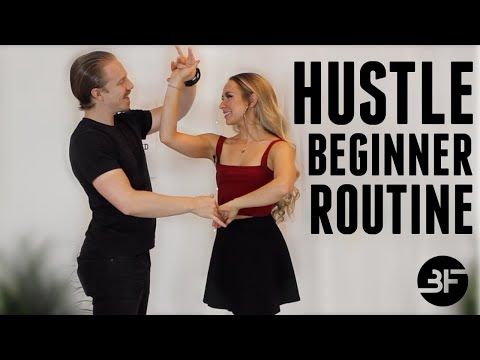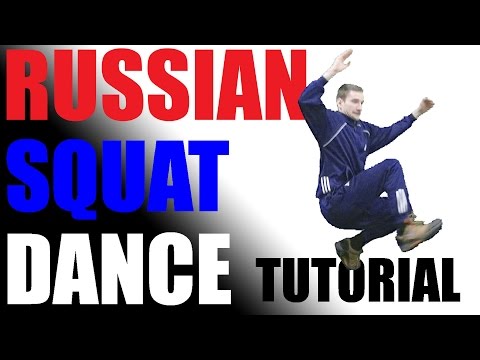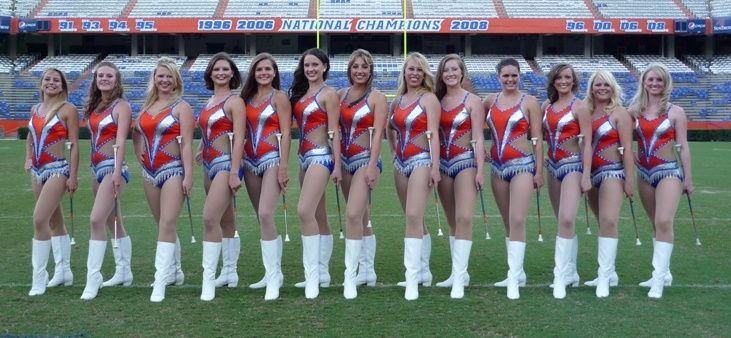How hard is pole dancing
How Hard is Pole Dancing?
I’m always getting people asking me: Is pole dancing hard?
The honest answer is both yes and no!
Learning is to pole dance is hard in as much as anything new is; everytime you try a new move you’ll probably find it difficult but once you’ve got that move nailed, usually it’s a piece of cake.
Pole dancing is not as difficult as people think, at least not to begin with! Your instructor should initially be teaching you moves that you can do with your current fitness level. As your fitness level and skill level improves, you’ll learn harder moves to match.
A lot of people watch pole dancing videos or tutorials and panic. They assume that they won’t be able to do ANY moves at all.
Of course if you’re trying a deadlift on your first day it is very, very unlikely that you’ll get anywhere close.
However if you start with a fireman spin, you will probably do a good enough job and have a great sense of achievement when you do!
The great thing about pole dancing is that when taught properly you really do start from scratch.
Most courses are designed in a way that you will start off with some easy spins to get you used to the pole.
Every class you take part in, you will get stronger and fitter and your body will adapt for pole dancing so that you will be a lot stronger when the time comes to try harder moves.
You don’t need to start pole dancing with a high level of fitness.
A lot of people worry and think they are not strong enough to hold themselves up.
While you will work towards moves when you hold your own body weight, a lot of spins use your momentum to get you round the pole, rather than your strength.
Here’s a link to a collection of beginner pole dance moves that will get you started.
When I pick up weights in the gym I feel almost useless when it comes to any kind of upper body workout, yet when I’m on the pole I can hold myself up with just my arms for what feels like hours on end.
Here’s Why I Love that Pole Dancing is Hard…
As with most things worth doing, getting good at poel dancing will (and should) be difficult.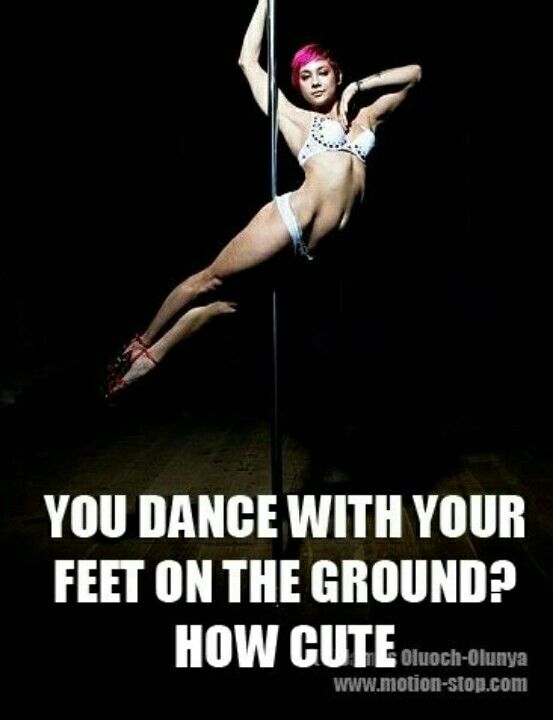
There would be no sense of enjoyment or achievement if every spin or trick came so naturally that you didn’t even need to try.
There will be moves that you can pick up really easily over the course of a one hour class yet there are some moves that you may struggle with class after class.
The great thing about pole dancing is that you can work on multiple moves at once.
While there may be one pole move you struggle with, there will be others that you nail in the mean time.
There are always moments of frustration with pole dancing where you simply can’t get a move.
A lot of the time moves just click into place so even if you’ve struggled for months and months on end, you could be just one class away from getting it right.
As with everything in life you can just have your ‘off days’.
Sometimes for no reason at all you may struggle with even the easiest moves that you know you can do.
While this can be frustrating it is good to know that moments like this don’t happen very often or last long and so your next class will be so much better.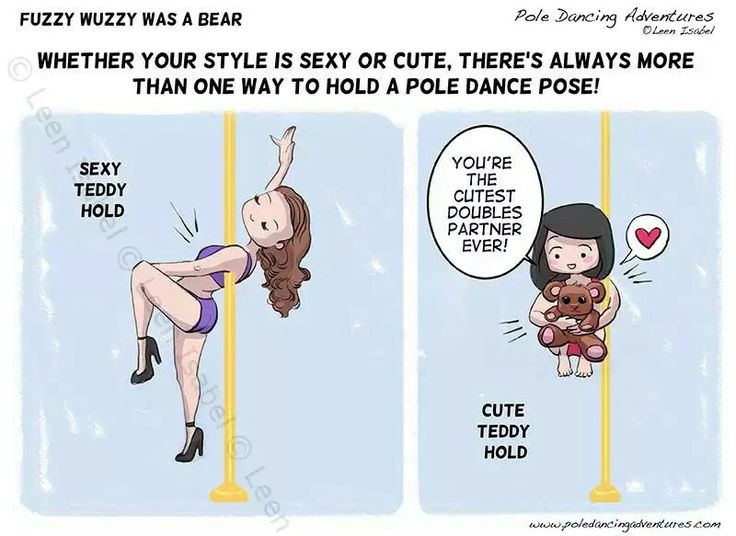
The Effort is TOTALLY Worth It!
You can ask any pole dancer who has struggled with a move or ever had any problems with pole dancing (which is pretty much all of us) that it is definitely worth any hard times you come across.
Being able to master a move, no matter how long you’ve been trying it is a really great feeling.
You can feel yourself getting better and stronger as the classes go on and it will give you such a great mental attitude and you’ll really look forward to pole dancing.
I’m sure most pole dancers will remember how great it felt to get your first spin right and those great feelings just keep on coming.
So why wait?
10 Things I Wish Everyone Knew About Pole Dancing
1.
Most pole dancers, regardless of age, are in the best shape of their lives.
Pole dancing is a full-body workout. It is resistance training and cardio in one, and flexibility is improved as well. Pole dancers perform acrobatic tricks either suspending their weight or propelling it around a metal pole.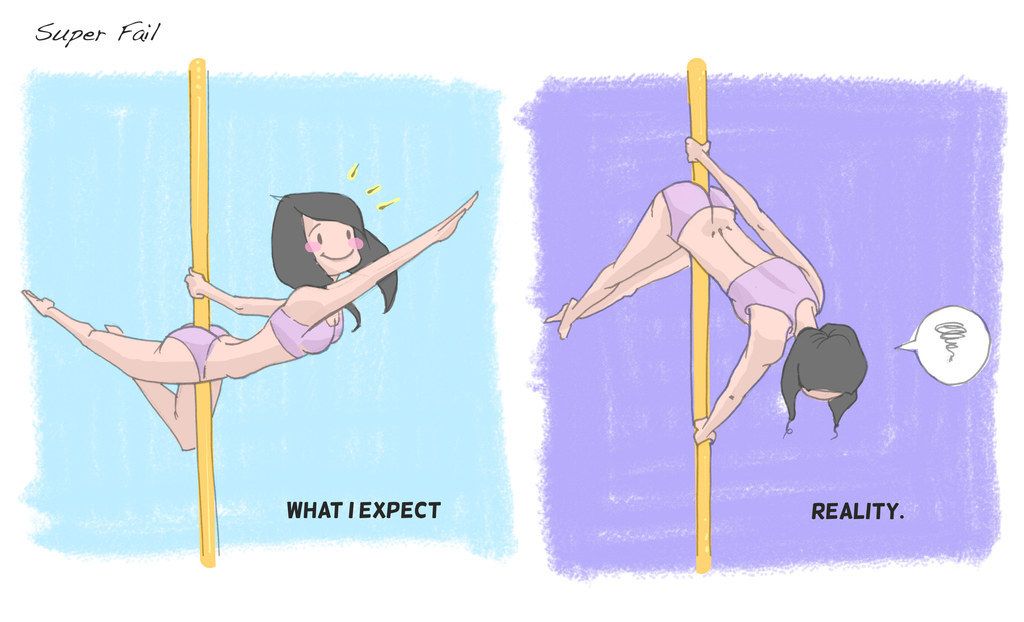 The simple act of climbing a pole is an incredible display of strength. It is no surprise, then, that most pole dancers insist they have never looked or felt better.
The simple act of climbing a pole is an incredible display of strength. It is no surprise, then, that most pole dancers insist they have never looked or felt better.
Natasha Wang, a world champion pole dancer, didn’t even start the exercise until age 29. Greta Pontarelli is a champion pole dancer at age 63—and she only began a few years ago!
2.
There are many different types of pole dancing.
Pole dancing is extremely versatile. There are three main branches: sport, art, and sexy:
- In sport, you have the serious athletes performing difficult tricks and displaying unfathomable muscular strength. (Some have even petitioned for pole to become an Olympic event!)
- Then there are also those who embrace the artistic side pole has to offer. The simplicity of a vertical apparatus like the pole is appealing in that there is no shortage of creativity—so many stories can be told. Many pole dancers perform barefoot and have been known to incorporate modern dance, props and costumes into their routines.
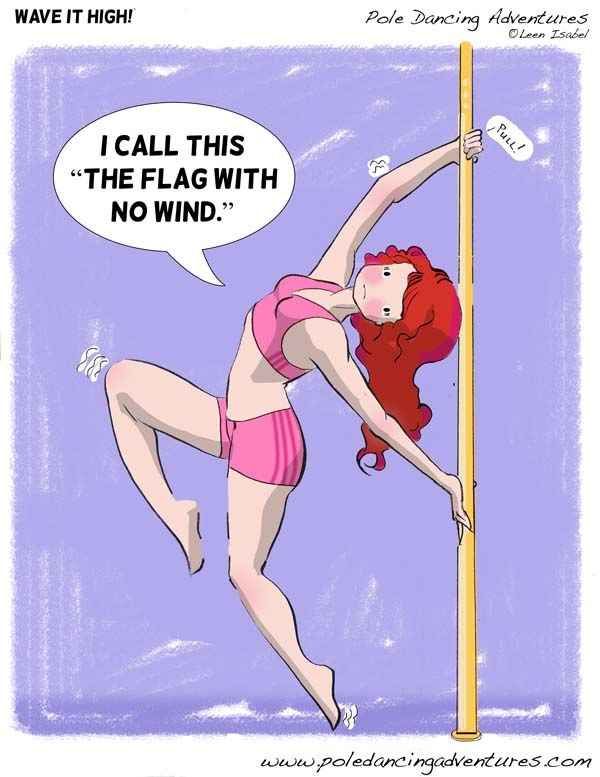
- Finally the sexy side of pole is still practiced by many. These dancers usually wear heels and favor more sensual, erotic movement.
Advertisement
This ad is displayed using third party content and we do not control its accessibility features.
Although there is some debate within the community about which direction pole is heading, all three forms flourish, and many pole dancers enjoy all styles. There is something for everyone!
3.
You need your skin exposed to grip the pole.
Pole dancers must have their legs, arms and stomachs exposed to safely grip the pole. There are some grounded spins, poses, and floor work that can be performed while wearing pants, but in order to perform more advanced moves, we must have the proper amount of skin exposure.
At first, the idea of working out in a sports bra and tiny shorts may seem intimidating. But most new pole dancers quickly discover they are having too much fun to worry about what they look like.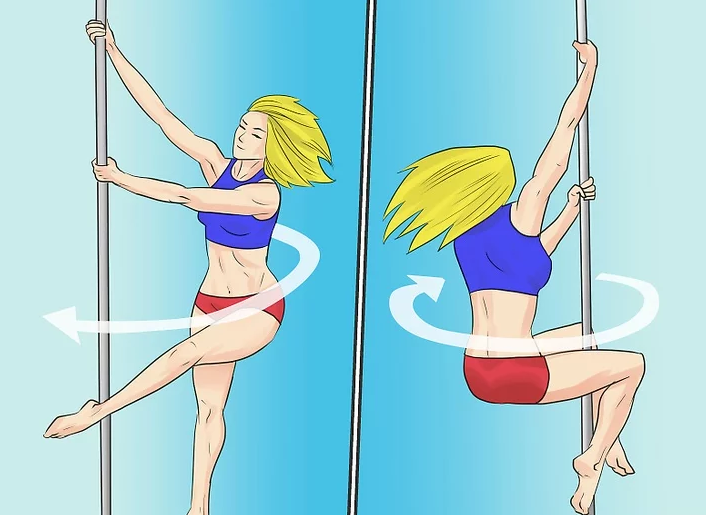 Their focus shifts instead to what they can accomplish—a freeing notion, really, that can help build confidence.
Their focus shifts instead to what they can accomplish—a freeing notion, really, that can help build confidence.
Advertisement
This ad is displayed using third party content and we do not control its accessibility features.
4.
It can be dangerous without proper training.
Although pole dancing is fun, it is a serious athletic endeavor that should not be taken lightly. Some people do not realize how challenging pole can be on a first attempt (re: every muscle in my body ached for days). In addition to bruises, pole dancers can experience shoulder or back pain with improper technique or overtraining.
You should always learn from a certified instructor. If training from home, take time properly installing your home pole according to manufacturer instructions and vetting a reputable online learning platform. If you're too eager to flip upside down, it can be especially dangerous and can lead to injury.
That said, I encourage everyone interested in pole dancing to go through gradually progressive training with a professional.
5.
Men can (and do!) pole dance.
The number of men pole dancing continues to grow every year. There are men’s divisions in competitions now, and I see more men joining classes I take or teach than ever before.
Men’s natural inclination toward upper body strength makes them ideal candidates for the sport. There are many ancient forms of pole dancing such as Mallakhamb, a traditional Indian sport where the practitioner performs yoga postures on a wooden pole—and has actually been performed exclusively by men throughout history.
Advertisement
This ad is displayed using third party content and we do not control its accessibility features.
6.
“Not having upper body strength” is not an excuse to avoid it.
I understand that you may be nervous to try pole dancing. Maybe you don’t feel you are at your ideal weight, or you think you have no rhythm, or you think you're too old. But I encourage you to stop creating roadblocks for yourself.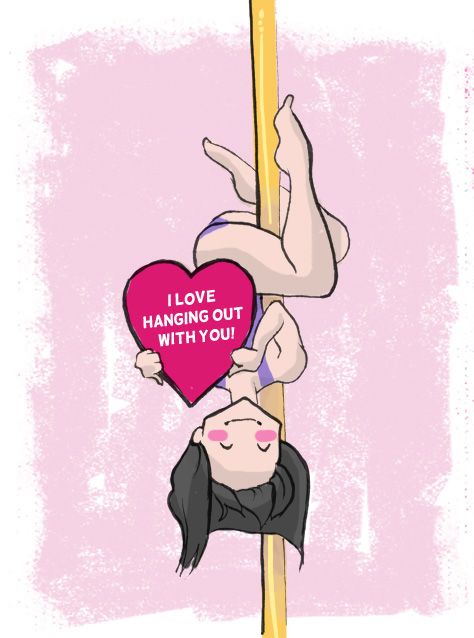 The best way to get better at something is to work on it! Every athletic journey requires a first courageous step. You'll grow over time as you build skills, strength and body awareness. Overcoming feats is part of what's so inspiring and empowering about pole.
The best way to get better at something is to work on it! Every athletic journey requires a first courageous step. You'll grow over time as you build skills, strength and body awareness. Overcoming feats is part of what's so inspiring and empowering about pole.
Whether you’re uncoordinated and can’t lift your own body weight or you're an athlete with gymnastic capabilities, there is always a new trick or transition to learn with pole dancing. The process of growth never ends, and the possibilities can be as creative as your imagination allows them to be.
7.
It’s not always so sexy.
Pole dancing is not always as overtly sexual as people may believe. The process of training is often full of awkward and unglamorous moments. Many of us end up with bruises, burns, and scrapes from trying new moves. And although we may wear sports bras and tiny shorts when performing, most dancers opt for comfort over fashion in between training sessions.
Advertisement
This ad is displayed using third party content and we do not control its accessibility features.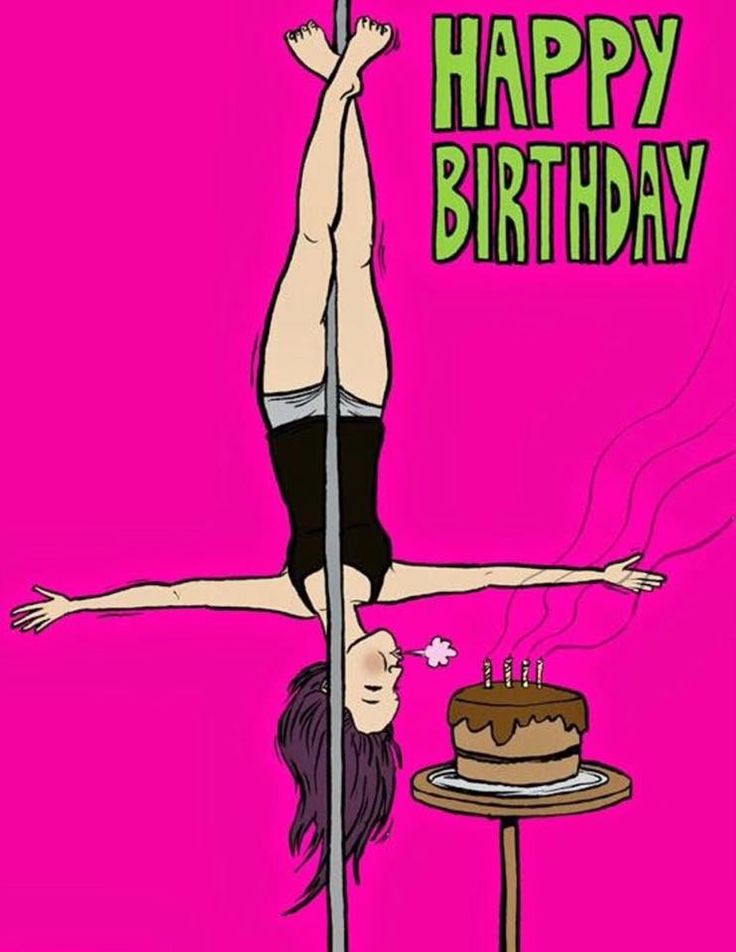
8.
But it can be very sexy.
The seductive allure of pole dancing still remains steadfast. There was a period of time when pole dancing first became mainstream where many pole dancers sought to distance its association with strip clubs. They felt this link delegitimized efforts to be taken seriously. The community has since evolved to understand this denial as a form of appropriation and recognizes with respect the roots this art form holds in exotic dance.
While many styles of dance and movement currently inspire modern pole dancing, the kind we practice today would not exist without strippers. Many of the first informal pole dancing classes in the US took place in strip clubs and many of the first pole studios in the US were founded by strippers who became small business owners and entrepreneurs.
9.
The community is very tight-knit.
Because what we do is still considered taboo by many, there is a unique closeness that bonds us together. There are pole dancers of all professions, ethnicities, religions, cultures, sizes, and ages.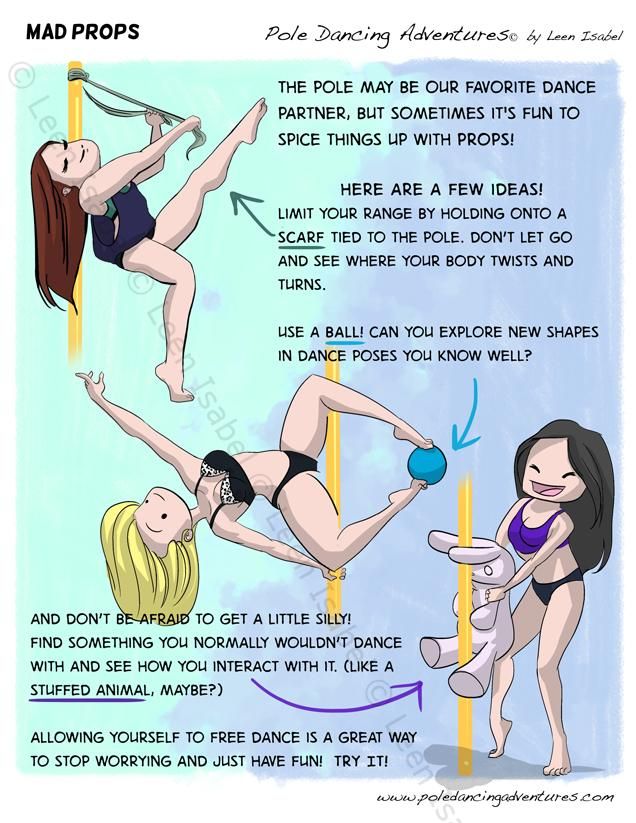 I have friends all over the world because of pole dancing, and I have friends who have been able to travel the world because of it.
I have friends all over the world because of pole dancing, and I have friends who have been able to travel the world because of it.
We support each other through learning new moves. We share each other’s videos, and we watch each other perform. This shared interest bonds us with a special understanding, just like any other team sport.
10.
Pole dancing can be emotionally healing.
This is one of the biggest reasons I've stuck with pole dancing as long as I have. The physical benefits are great, but the feeling you get from mastering a move or expressing a particular emotion is indescribable. For example, when I am able to assist a student without any fitness background in their first pole climb, it is an honor to witness their feeling of accomplishment and resulting boost in self-confidence.
You can dance out any emotion in class, whether joyful, angry, or sad. The combination of athletic skill and artistic influence makes it unique to any other form of dance or sport.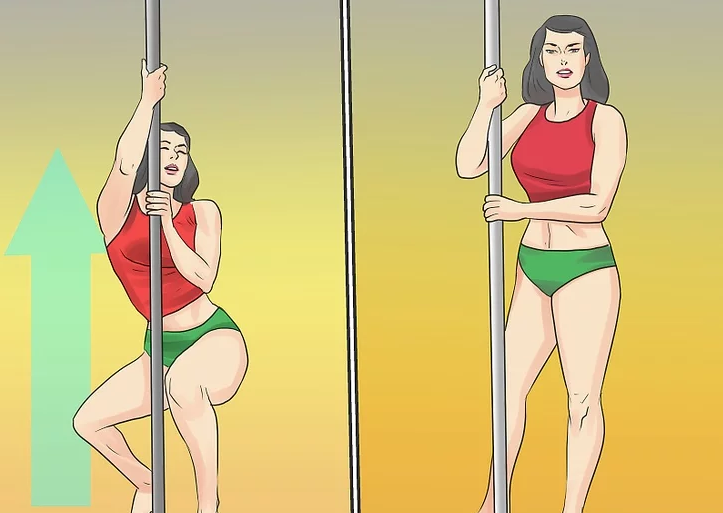 To me, it is both dance and sport woven together into one beautiful, athletic art form.
To me, it is both dance and sport woven together into one beautiful, athletic art form.
Pole Dance for Beginners
Pole dancing or Pole Dance, as they are also called, has recently gained extraordinary popularity. Many want to learn how to gracefully and easily perform difficult tricks, spin on a pole, and demonstrate the wonders of flexibility and plasticity.
This direction really has many advantages. Practicing regularly, a beginner dancer:
- develops muscles, improves figure; nine0010
- strengthens the respiratory and cardiovascular systems;
- improves immunity;
- learns to feel his body and control it;
- increases his self-esteem and feels even more attractive.
But of course it won't come all at once. You need to be ready for trials - both physical and moral. And to make it easier for you to deal with them, you began to enjoy training, check out a few tips. We hope you get something useful from them. By the way, in St. Petersburg, pole dancing is especially popular at Admiralteisky and Vyborgsky districts, including metro station Baltiyskaya and metro station Ozerki.
By the way, in St. Petersburg, pole dancing is especially popular at Admiralteisky and Vyborgsky districts, including metro station Baltiyskaya and metro station Ozerki.
The right attitude is important
Many people give up after the first lesson on the pole. Faced with serious workloads, it can be hard to overpower yourself and continue. In addition, some compare themselves to other, more experienced athletes. And, of course, this comparison is often not in their favor. Remember: those who show the best result today conquer with their clever tricks, just like you, they started small . No one was born with such skills. All this was achieved through hard training. Treat such people as great motivation. If they can do it, then you can too!
Pole dancing has been given observer status with the GAISF (General Association of International Sports Federations), due to which they can expect to be included in the Olympic program.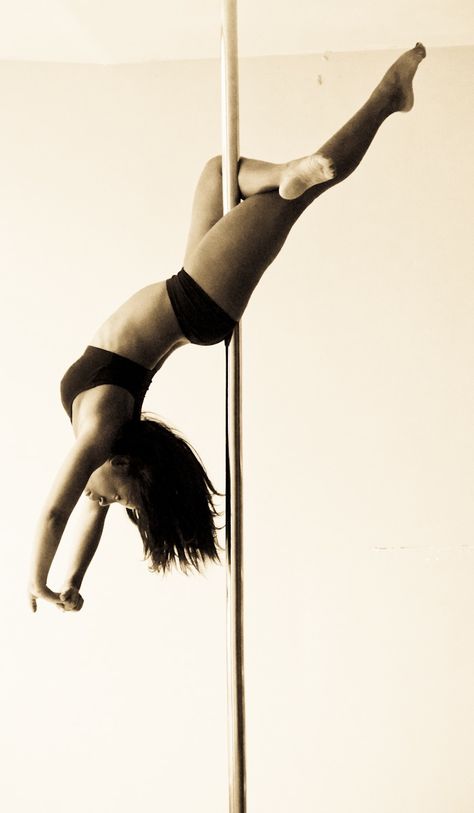 In many ways, Katie Coates, an Englishwoman who founded the International Pole Sports Federation, contributed to this. nine0040
In many ways, Katie Coates, an Englishwoman who founded the International Pole Sports Federation, contributed to this. nine0040
Get ready to work hard through physical pain at first. Bruises, abrasions, calluses, krepatura - all this should not come as a surprise to you. But, don't let such tests scare you. If you really want to succeed in this field, be patient . A nice "payment" for your efforts is just around the corner. The dancing beginner will soon begin to notice how the body rewards him for his hard work with growing strength, endurance and honing the curves of the physical form. When you begin to notice the first results, you will no longer be stopped, since you will not want to be limited by what you have already achieved. nine0005
Wear the right clothes
To get the most out of your pole training, it's important to wear the "right" clothes. For a warm-up, during which the muscles are prepared for further loads on the pole, you can wear leggings and a T-shirt.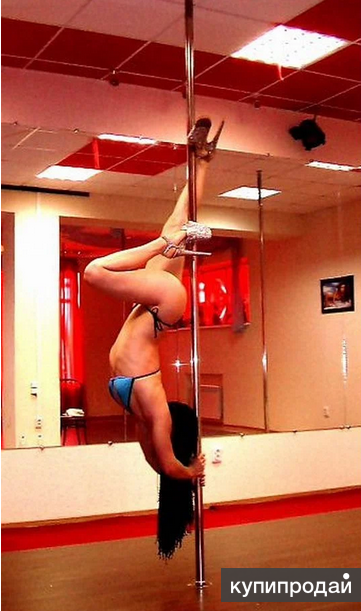 It is convenient to do strength and stretching exercises in them. For the pole, short, tight shorts, a tank top, or custom uniform are best. It must have the following properties:0005
It is convenient to do strength and stretching exercises in them. For the pole, short, tight shorts, a tank top, or custom uniform are best. It must have the following properties:0005
- hygiene;
- breathability;
- excellent grip on the surface of the pole;
- thigh compression;
- good breast support;
- moisture absorption;
- hypoallergenic.
For the top, you can choose a T-shirt made in the “wrestler” style, which has a deep armhole in the area of the shoulder blades and enlarged cutouts under the arms (needed to grip the pylon). Also suitable is a top that has an elastic band in front under the chest, and a double placket in the back, formed in the form of the letter "X". This style is also called "frog". Some people like the Carmen T-shirt with an asymmetrical strap thrown over one shoulder. nine0005
Gloves will not be superfluous either. They must be special, with an anti-slip coating. They usually have a lacquer base and lace, knitwear or microfiber inserts. So don't try to make them yourself. To reduce the risk of sprains and injuries, bandages are used - on the ankle, elbow, knee, wrist.
They usually have a lacquer base and lace, knitwear or microfiber inserts. So don't try to make them yourself. To reduce the risk of sprains and injuries, bandages are used - on the ankle, elbow, knee, wrist.
In the XII-XIII centuries in India, a very unusual direction of yoga on pillars called Mallakhamb was widespread. It shows an amazing similarity with modern pole dancing. This practice was intended primarily for men. Using poles, they performed complex tricks and thus trained their strength and endurance. Having achieved some success in this direction, they demonstrated their achievements to others. nine0040
As for shoes, you can train without them. It all depends on the individual preferences of the dancer. Some wear half-Czech shoes, while others, already relatively experienced, prefer strips - sandals on an extremely high platform and heels. By the way, they say that it is the strips that make it possible to achieve the maximum effect of the pole dance, seductiveness and elegance of movements.
Warm-up is essential
A good warm-up should never be neglected. Poorly warmed up muscles are easy to injure. Take 15 minutes for this important part of any workout. You can perform the following exercises on different parts of the body:
- Neck . Do tilts, turns, half-turns to the right and left, forward and backward 20 times, circular turns clockwise and counterclockwise 10 times.
- Chest muscles . Arch your back, round, spread your arms to the sides.
- Press . In addition to the standard twist on the press (you can do it with legs raised), do “scissors”, “bike”, swings for each leg for several approaches, as well as a plank on your hands. nine0009 Buttocks and legs . Squats 30 times, lunges on each leg 20 times are the best option for warming up the muscles of the lower body.
Pay special attention to the muscles of the arms , as they are the main load during the pole dance. Do push-ups regularly, try to pull yourself up on the horizontal bar, pump your arms with dumbbells and a barbell. However, a competent coach will always tell you what exercises you need to do and make sure that you do not start performing tricks on a pole without prior preparation. nine0005
Do push-ups regularly, try to pull yourself up on the horizontal bar, pump your arms with dumbbells and a barbell. However, a competent coach will always tell you what exercises you need to do and make sure that you do not start performing tricks on a pole without prior preparation. nine0005
Exercises for beginners
Tricks used in pole dancing can be divided into two main groups: static tricks (stationary) and twists (rotary movements around the pole). In turn, the tricks consist of " hangs " and " sits ", during which the dancer hangs or seems to "sit" on the pylon, respectively.
How to prepare for the effective performance of the static components of the dance? For a beginner, training of the following elements is suitable:
- " Chair ". It is necessary to clasp the pylon with your legs, firmly squeeze the inside of the thighs and hold on to the pole with your hands.
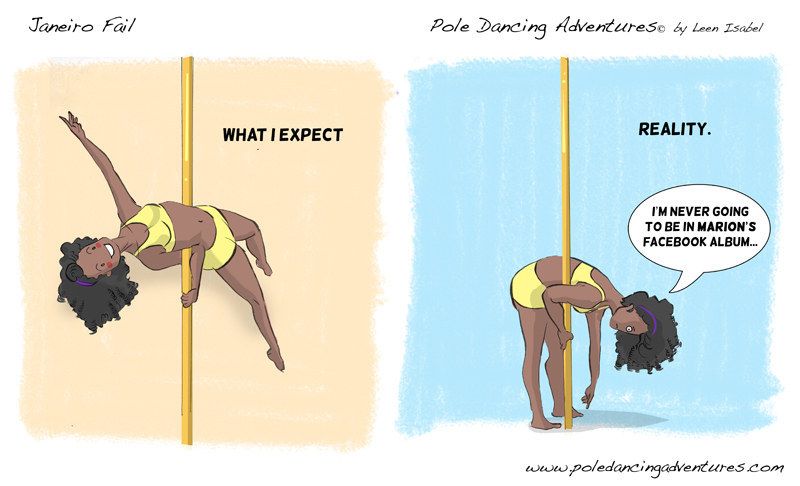 In this case, the legs should be perpendicular to the pylon. If you still can't keep them straight, you can bend at the knees.
In this case, the legs should be perpendicular to the pylon. If you still can't keep them straight, you can bend at the knees. - " Fireman ". Cross your bent legs around the pole, hold with your hands and gracefully arch your back.
For a beginner, the following rotation exercises are also suitable:
- " Footboard ". It is necessary to straighten one arm, take it on the pylon above the head, and the other - at the level of the hips. Push off the floor with your feet and spin around the pole.
- " Frog ". Straighten your left arm and grasp the pole above your head. Bend the right one and grab the pylon at chest level. The left leg is wrapped around the pole. Push off with your right foot and spin.
The trainer will tell you how to do the exercises correctly and what needs to be corrected. It is enough to practice 2-3 times a week (provided that you are not lazy) in order to see the first tangible results in a couple of months.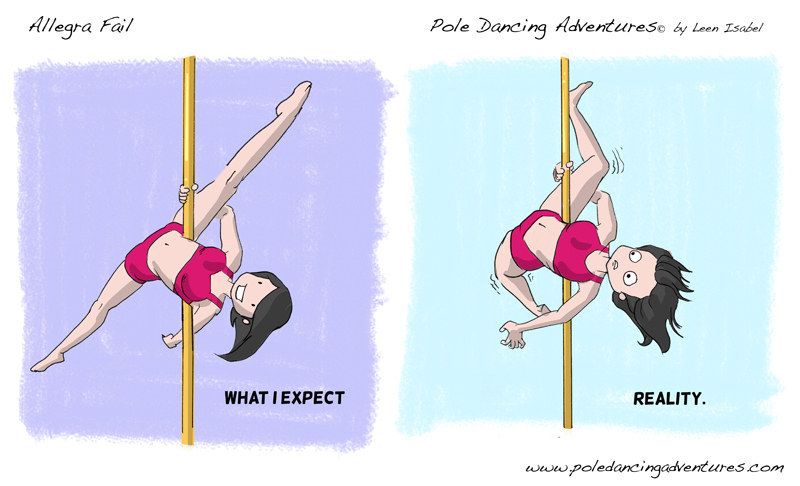 nine0005
nine0005
Does a beginner need to be physically fit?
Existing physical fitness is rather an advantage, but not a prerequisite for starting classes. Dance experience is not required at all. A lot of girls come to training with absolutely no base. All the necessary skills are acquired in the process, from lesson to lesson. The coach pays enough attention to gradual physical preparation, so no one will demand quick results from a beginner. And it's even better if you don't rush. The main thing is to do everything not for speed, but for quality. nine0005
You need to be prepared for the fact that few people succeed the first time. If something didn’t work out today, then a little more effort, and even difficult tricks will begin to succumb to you. After all, it is such a pleasure to reveal new, unknown boundaries of your body.
The use of article materials is allowed only if there is an active link to the source!!!
What is Pole Dance and how to start dancing
Pole Dance is a harmonious dance performed on a metal pole (pylon).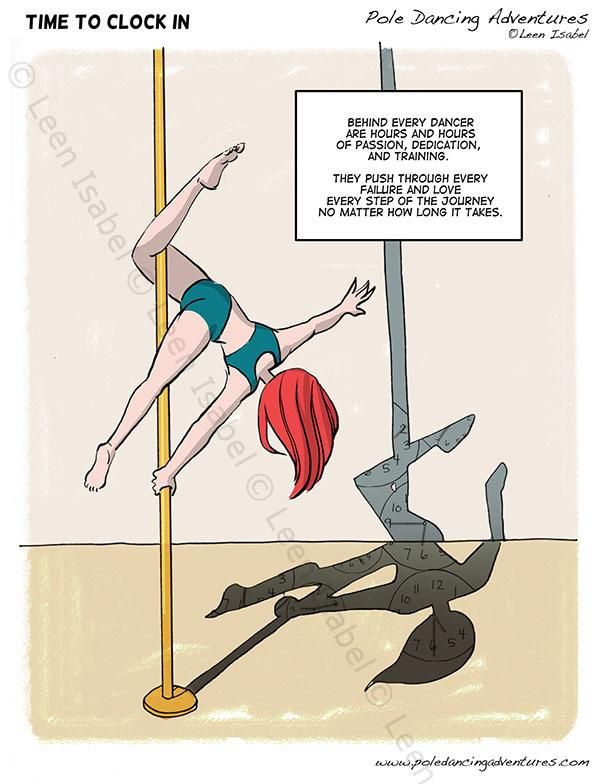 It combines elements of acrobatics, choreography and gymnastics. This direction does not need strong physical training, all the required skills and abilities are given during constant training. It is often confused with striptease and pole dancing, but in reality there is nothing in common between them. nine0005
It combines elements of acrobatics, choreography and gymnastics. This direction does not need strong physical training, all the required skills and abilities are given during constant training. It is often confused with striptease and pole dancing, but in reality there is nothing in common between them. nine0005
Greetings, dear readers. If you are here, then you have the opportunity right now to learn about such a dance as Pole Dance. Classes on the pylon attract modern girls and women, draw them in and fall in love with themselves. The multifaceted Pole Dance gives meaning and fulfillment over time, a thirst for achieving new goals. It gives fans more and more opportunities to develop themselves, to be more attractive and stronger.
What is Pole Dance?
In pole dance, a pole or pylon serves as the main working element, a sports equipment on which various tricks are performed. In striptease, a metal pole is a decorative detail, the stripper dances next to it, doing simple dance moves - no complicated tricks are performed here. nine0169
nine0169
Pole Dance is a physically difficult pole dance that can be safely attributed to a power sport. Young girls, women of different ages and even children can do it. By the way, men can also practice on the pylon, perform power elements of increased complexity.
Standard Pole Training
As a rule, Pole Dance classes for beginners begin with a warm-up to prevent sprains and all sorts of injuries. A good start makes pole training safe and effective, prepares the ligaments and muscles for loads and twists. Then it is allowed to start performing simple elements of the dance. When the body is well warmed up, stretching is done (static and dynamic). nine0005
Flexibility is important for performing the main number of elements on the pole, so stretching is in every workout, after warming up and at the end of the session. A force load is placed on the prepared body. A lot of energy is wasted here. To perform heavy tricks in pole dance, the use of a mat is provided. After a power load, the trainer does stretching and a hitch.
After a power load, the trainer does stretching and a hitch.
Tips for pole dance beginners
Pylons for training are dynamic, which are spinning, and static. There is an erroneous opinion that it is better for beginners to practice on a spinning pylon. Beginning dancers are advised to start doing dance elements on a static pole. It may be more difficult, but it’s faster to make progress, get stronger and develop a muscular corset. The issue of choosing clothes for pole dance for practicing on the pylon is also of interest to beginners. Everything is pretty simple here. For the first workout, you don’t need high-heeled shoes and expensive uniforms. Initially, a t-shirt, shorts and socks are enough. nine0005
In the future, you can decide for yourself what you want to wear for training in Pole Dance. For the first lesson, it is not at all necessary to bring magnesia (liquid chalk to improve grip with the pole) or gloves. Just try to come to the lessons for beginners and in practice understand whether special tools are needed or not. When hands are held tight without anything, gloves and magnesia are not needed. In addition, the coach will tell you what would be the best option in a particular case.
A big problem for beginners is bruising. Without them, the first workouts are unlikely to do. It will take some time to put up with them. To alleviate the condition and quickly improve the appearance of the body, you can use special ointments, such as lifeguard 911, troxevasin, badyaga. Time and patience will help in the fight against bruises.
IMPORTANT! Before starting pole lessons, it is important to check your health condition. There are a number of diseases, due to which the doctor may prevent you from training. That is, you need to consult a specialist, especially if you already have any health problems. nine0005
Varieties of Pole Dance
Today there are three main directions of Pole Dance:
- Exotic. Here, the emphasis is on strength elements in a percentage ratio of approximately 70 to 30.
 In addition, the bulk of the dance movements are performed on the floor. This kind of pole dance is characterized by plasticity and eroticism. At the same time, there is no undressing in the exotic.
In addition, the bulk of the dance movements are performed on the floor. This kind of pole dance is characterized by plasticity and eroticism. At the same time, there is no undressing in the exotic. - Art. The direction is characterized by a harmonious combination of power elements and choreography. The emphasis is on the technique of performance, the quality of tricks, and the outfit of the performer. The classical understanding of the direction is pole dance as an art. nine0010
- Sport/Fitness. The most difficult variety of Pole Dance. In the performance of the pole dance, approximately 70% of the complexity and quality is given.
Why should everyone try pole lessons?
Paul Dance makes you constantly work on yourself, your body, hone your own skills, fight fear and pain. This can hardly be called a disadvantage of this type of dance, since there is a goal, work and victories.
In training, music and movements allow you to relax, relieve negativity and nervous tension. On the pylon you become more graceful, stronger and more flexible, and also much more confident in yourself. Pole Dance is the art of controlling your own body, which always needs care and love. This is lightness and endurance, a slender figure, which you get as a reward for perseverance and work in training. By the way, the successful half-dancer Anna Eliseeva agrees with this. nine0005
Pole sport is a combination of useful and pleasant. This projectile serves as a simulator that allows you to keep your body in good shape, lose weight, and build muscle strength. In the process of training, the body receives a great physical load on the main muscle groups, especially on the back, arms and abs. Pole dancers work within their own limits, their muscles develop rapidly, and the body tightens and becomes attractive.
When practicing on the pole, the joints and ligaments become healthy and flexible, since in Paul Dance the main part of the elements is based on acrobatics that require great effort and fantastic flexibility.